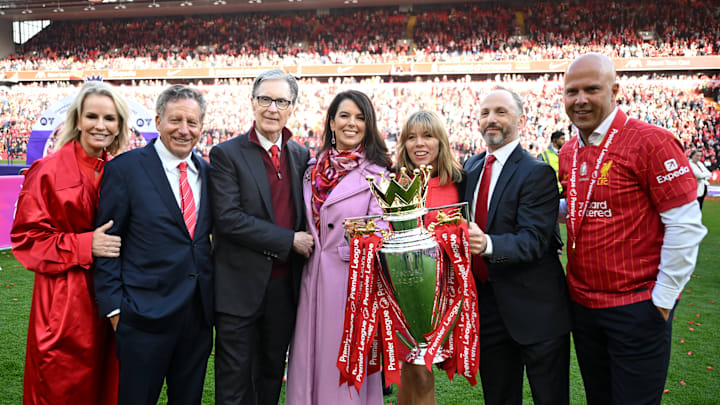After a quiet summer last year, Liverpool has finally remembered who they are. Or maybe you can say they’ve decided to build on last season’s success and aim higher.
The Reds have inked deals with Florian Wirtz, Jeremie Frimpong, Milos Kerkez, and goalkeeper Giorgi Mamardashvili, and they didn’t stop there—they recently landed Hugo Ekitike from Frankfurt, showing their serious ambition of becoming an authentic powerhouse in the world once again.
Not entertained yet? Alexander Isak reportedly told Newcastle he’s ready for a new challenge, and the long-rumored Liverpool connection might finally materialize. The Reds are watching closely.
Altogether, Liverpool has spent close to £300 million so far. Before we break down how these signings reshape the squad, it’s worth asking—where exactly is all this money coming from?
Benefit and Cost
According to The Athletic, the club earned over £600 million during the campaign, and projections indicate that revenue could surpass £700 million in 2024–25.
This surge stems from a perfect storm of footballing achievement and strategic planning.
Winning the Premier League brought in a significant cash injection through prize money and broadcasting rights, while the club’s return to the Champions League opened the door for increased UEFA revenue or other commercial exposure.
Despite putting many previous investments in Anfield’s infrastructure improvements, the brand-new stadium will soon play its part in this financial revival.
The completion of the expanded Anfield Road Stand allows for greater ticket sales, more home fixtures, and heightened matchday revenue.

But perhaps the biggest financial development lies ahead: starting in 2025, Liverpool will transition from Nike to Adidas as its official kit sponsor.
The new deal guarantees between £30 to and £60 million annually, but with built-in royalty clauses linked to merchandise sales, total revenue from the partnership could exceed £75 million to £100 million per year.
For the roster rebuilding, even after bringing in high-earning signings like Wirtz and Ekitike, whose combined wages are estimated at £25 million annually,
Liverpool’s wage-to-revenue ratio remains healthy, hovering between 62 and 65 percent.
The departure of Trent Alexander-Arnold, who earned roughly £12 million per year, helped offset the wage burden, giving the club more flexibility. With the other five players leaving, Liverpool have so far generated around £64 million.
Looking ahead, Liverpool’s financial outlook remains bright. The Premier League is set to begin a new £12.25 billion TV rights cycle in 2025–26, further boosting the club’s broadcast income.
Other Revenue Sources
Liverpool’s financial growth is not limited to results on the pitch. The club has made a concerted effort to diversify its revenue streams and transform Anfield into a year-round commercial destination.
Beyond football matches, Anfield now regularly hosts concerts featuring big names such as Taylor Swift and Dua Lipa, bringing in millions in non-matchday income.

On match days, Liverpool also surged financially. According to Liverpool’s financial report, Liverpool’s matchday income climbed by £22 million, reaching a record £102 million in the 2023-24 season.
This boost is attributed not just to more fixtures, but also to the increased capacity from the Anfield Road Stand expansion.
Fans are spending more on tickets, hospitality, and merchandise, making each home game a significant source of revenue.
Commercially, Liverpool now have a high-profile sponsorship portfolio in the football world.
The club’s shirt deal with Standard Chartered is valued at £50 million per year, and it is supported by a network of high-profile partners, including AXA, Google Pixel, Peloton, and Carlsberg. In the 2022–23 season, these sponsorships brought in a combined £144 million, as reported.
